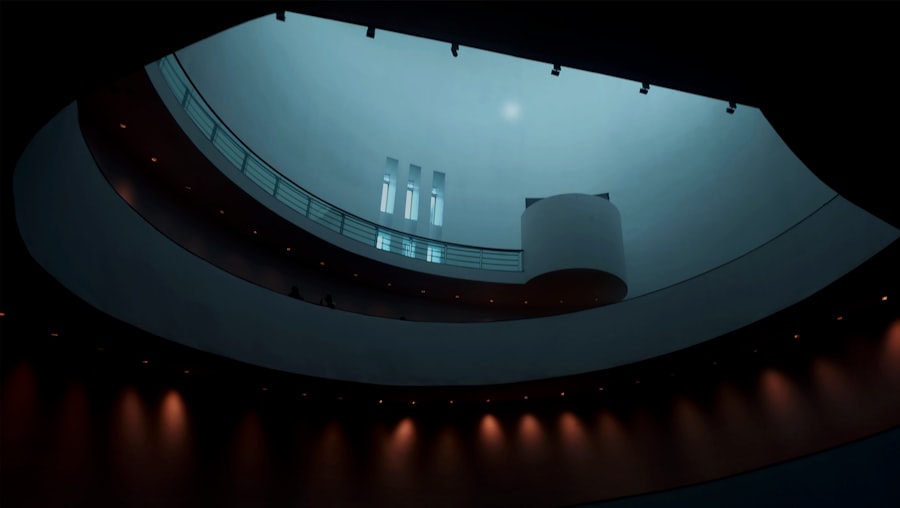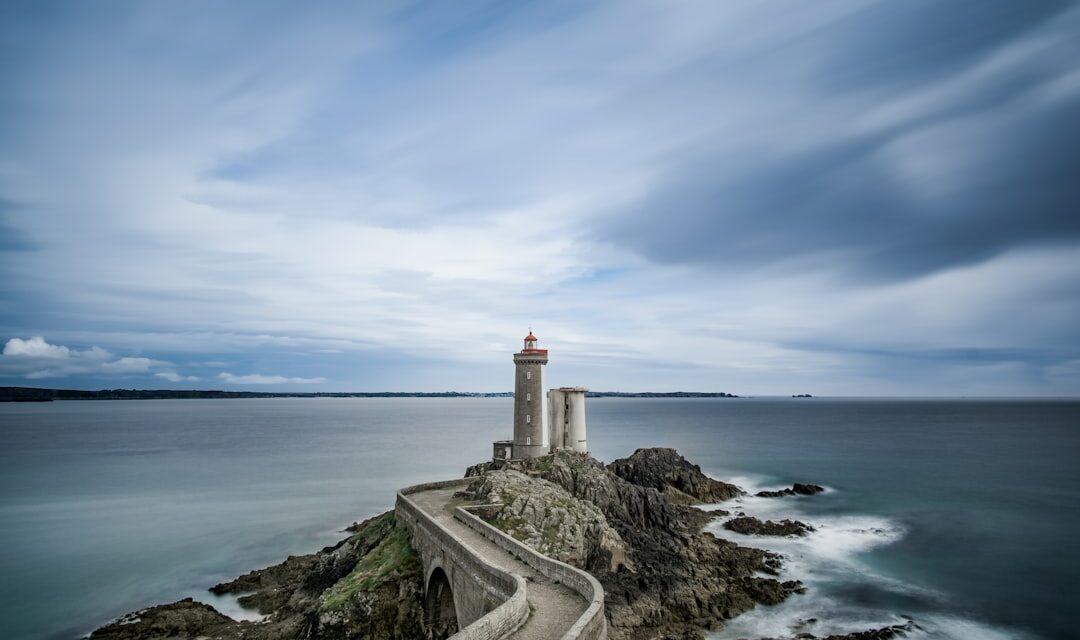Land art, also known as earth art, emerged in the late 1960s and early 1970s as a response to the commercialisation and commodification of art. It was a movement that sought to break away from the traditional confines of galleries and museums, and instead, create art that was integrated with the natural landscape. The origins of land art can be traced back to artists such as Robert Smithson, Michael Heizer, and Walter De Maria, who were inspired by the vast and untouched landscapes of the American West.
These artists aimed to create works that were not only visually striking but also engaged with the environment in a way that traditional art forms could not. One of the key driving forces behind the emergence of land art was the desire to challenge the notion of art as a commodity. By creating works that were inherently tied to the land, artists were able to subvert the commercial art market and create pieces that were not easily bought or sold.
This rejection of the art market was a central tenet of the land art movement, and it allowed artists to explore new ways of creating and experiencing art. The movement also sought to challenge the traditional boundaries of art, blurring the lines between sculpture, architecture, and the natural environment. This interdisciplinary approach to art-making was a radical departure from the conventions of the time and paved the way for a new form of artistic expression.
Summary
- Land art originated in the late 1960s and early 1970s as a response to the commercialization of art and a desire to create works that were integrated with the natural landscape.
- Key artists in the land art movement include Robert Smithson, Nancy Holt, and Andy Goldsworthy, who created iconic works such as “Spiral Jetty,” “Sun Tunnels,” and “Stone River.”
- Land art seeks to establish a harmonious relationship between art and the environment, often using natural materials and landscapes as the canvas for artistic expression.
- Techniques and materials used in land art include earth, rocks, plants, and other natural elements, as well as the manipulation of the land itself through digging, shaping, and rearranging.
- Land art has had a significant impact on the art world, challenging traditional notions of art and inspiring new ways of thinking about the relationship between art, nature, and the environment.
Key Artists and Their Works
The Iconic “Spiral Jetty”
Located in the Great Salt Lake in Utah, “Spiral Jetty” is a 1,500-foot-long coil of rocks and earth that extends into the lake. The work is both a sculpture and a site-specific installation, and it has become an iconic symbol of the land art movement.
Influential Artists in the Land Art Movement
Another influential artist in the land art movement is Michael Heizer, whose monumental work “Double Negative” consists of two large trenches cut into the Nevada desert. The work is a powerful example of how land art can transform the natural landscape, creating new forms and structures that interact with the environment in unexpected ways. Walter De Maria is another key figure in the land art movement, known for his work “The Lightning Field.” Located in New Mexico, “The Lightning Field” consists of 400 stainless steel poles arranged in a grid over an area of 1 mile by 1 kilometer.
Pushing the Boundaries of Art
The work is designed to interact with the natural elements, particularly lightning, and it offers a unique experience for viewers who visit the site. These artists, along with many others, have played a crucial role in shaping the land art movement and pushing the boundaries of what art can be. Their works continue to inspire artists and audiences alike, demonstrating the power of art to engage with the natural world in profound and meaningful ways.
The Relationship Between Land Art and the Environment

One of the defining characteristics of land art is its close relationship with the environment. Unlike traditional forms of art, which are often created in isolation from their surroundings, land art is intimately connected to the natural landscape. This connection is central to the meaning and impact of land art, as it allows artists to engage with environmental issues and explore new ways of interacting with the earth.
By creating works that are integrated with the land, artists are able to draw attention to the beauty and fragility of the natural world, as well as the impact of human activity on the environment. Land art also challenges traditional notions of ownership and control over the land. Many land art works are located on public or private land, raising questions about who has the right to access and experience these works.
This tension between art and land ownership has sparked important conversations about public space and the role of art in shaping our relationship with the environment. In this way, land art has become a powerful tool for raising awareness about environmental issues and advocating for greater stewardship of the earth. The movement has inspired countless artists and activists to use their creative talents to address pressing environmental concerns, demonstrating the potential for art to effect positive change in the world.
Techniques and Materials Used in Land Art
Land art encompasses a wide range of techniques and materials, reflecting the diverse approaches taken by artists working in this genre. One common technique used in land art is earthworks, which involves manipulating or sculpting the natural landscape to create new forms and structures. This can include digging trenches, piling rocks, or shaping earth into geometric patterns.
Earthworks are often created using simple tools such as shovels, rakes, and bulldozers, allowing artists to work directly with the land to realise their vision. Another key technique used in land art is site-specific installation, which involves creating works that are designed to interact with a specific location or environment. This approach allows artists to respond directly to the unique characteristics of a site, whether it be a desert, forest, or coastline.
Site-specific installations often incorporate natural materials such as rocks, wood, and plants, blurring the boundaries between art and nature. By using materials sourced from the local environment, artists are able to create works that are deeply rooted in their surroundings, offering viewers a new perspective on the landscape. In addition to these techniques, many land artists also use photography and film to document their works and share them with a wider audience.
These mediums allow artists to capture the ephemeral nature of land art, which is often subject to natural processes such as erosion and decay. By documenting their works through photography and film, artists are able to preserve their creations for future generations and extend their impact beyond the physical site.
The Impact of Land Art on the Art World
The emergence of land art had a profound impact on the art world, challenging established norms and opening up new possibilities for artistic expression. One of the key contributions of land art was its rejection of traditional art spaces such as galleries and museums. By creating works that were integrated with the natural landscape, artists were able to reach new audiences and engage with people who may not have otherwise encountered their work.
This shift towards site-specific installations also encouraged viewers to reconsider their relationship with the environment, prompting them to see the natural world in a new light. Land art also played a crucial role in expanding the definition of what art could be. By blurring the boundaries between sculpture, architecture, and landscape design, land artists pushed against conventional categorisations of artistic practice.
This interdisciplinary approach opened up new avenues for artistic experimentation and encouraged artists to explore new ways of engaging with their surroundings. The impact of this shift can still be seen today in contemporary art practices that continue to challenge traditional notions of medium and form. Furthermore, land art has had a lasting impact on environmental activism within the art world.
Many artists working in this genre have used their platform to advocate for greater awareness and action on environmental issues such as climate change, deforestation, and habitat destruction. Through their works, these artists have been able to raise important questions about humanity’s relationship with nature and inspire others to take action in protecting our planet. In this way, land art has become a powerful force for change within both the artistic community and wider society.
Land Art as a Form of Protest and Activism

Challenging Humanity’s Relationship with Nature
One notable example is Nancy Holt’s “Sun Tunnels,” a large-scale earthwork located in Utah’s Great Basin Desert. The work consists of four massive concrete tunnels arranged in an X shape that align with the movements of the sun during solstices and equinoxes. “Sun Tunnels” serves as both an artistic statement and a commentary on humanity’s relationship with nature, drawing attention to our dependence on natural cycles and processes.
Reclaiming Agency and Advocating for the Environment
Another example is Ana Mendieta’s “Silueta Series,” which involved creating large-scale earthworks using her own body as a medium. Mendieta’s works often addressed themes of identity, feminism, and connection to nature, offering a powerful critique of patriarchal systems and environmental degradation. Through her works, Mendieta sought to reclaim her own agency as an artist while also advocating for greater respect for the earth and its resources.
Protesting Destructive Human Activities
Land art has also been used as a form of protest against destructive human activities such as mining, deforestation, and urban development. Many artists have created works that directly challenge these practices by drawing attention to their impact on the environment. By situating their works in areas under threat from human activity, these artists have been able to raise awareness about pressing environmental concerns and advocate for greater protection of natural landscapes.
The Future of Land Art
As we look towards the future, it is clear that land art will continue to play an important role in shaping artistic practice and engaging with environmental issues. The movement has inspired countless artists around the world to explore new ways of creating works that are deeply connected to their surroundings. This trend towards site-specific installations and earthworks reflects a growing interest in engaging with nature in meaningful ways.
Furthermore, land art has become an important tool for addressing pressing environmental concerns such as climate change, habitat destruction, and pollution. Many artists working in this genre are using their platform to advocate for greater awareness and action on these issues, demonstrating the potential for art to effect positive change in society. In conclusion, land art has had a profound impact on both the artistic community and wider society by challenging traditional notions of art-making and engaging with pressing environmental concerns.
The movement has inspired countless artists to explore new ways of creating works that are deeply connected to their surroundings while also advocating for greater awareness and action on environmental issues. As we look towards the future, it is clear that land art will continue to play an important role in shaping artistic practice and engaging with pressing social and environmental concerns.
If you are interested in learning more about different art movements, you may want to check out this article on Impressionism. This artistic style, which emerged in the 19th century, focused on capturing the fleeting effects of light and atmosphere in outdoor scenes. Impressionist artists such as Claude Monet and Edgar Degas used loose brushwork and vibrant colors to create their distinctive works. Understanding Impressionism can provide valuable context for appreciating the natural elements and ephemeral qualities that are central to Land Art.
FAQs
What is Land Art?
Land Art, also known as Earth Art, is an art movement that emerged in the 1960s and 1970s. It involves creating art directly in the landscape using natural materials such as rocks, soil, and plants.
Who are some prominent Land Artists?
Some prominent Land Artists include Robert Smithson, Nancy Holt, Michael Heizer, and Andy Goldsworthy. These artists are known for their large-scale, site-specific works that interact with the natural environment.
What are the key characteristics of Land Art?
Key characteristics of Land Art include the use of natural materials, the creation of site-specific works, and a focus on the relationship between art and the environment. Land Art often blurs the boundaries between art and nature.
Where can Land Art be found?
Land Art can be found in various locations around the world, including deserts, forests, and coastal areas. Some Land Art works are permanent installations, while others are temporary and may have been documented through photography or film.
What is the significance of Land Art?
Land Art is significant for its emphasis on the relationship between art and the natural world. It challenges traditional notions of art as something separate from nature and encourages viewers to engage with the environment in new ways.




